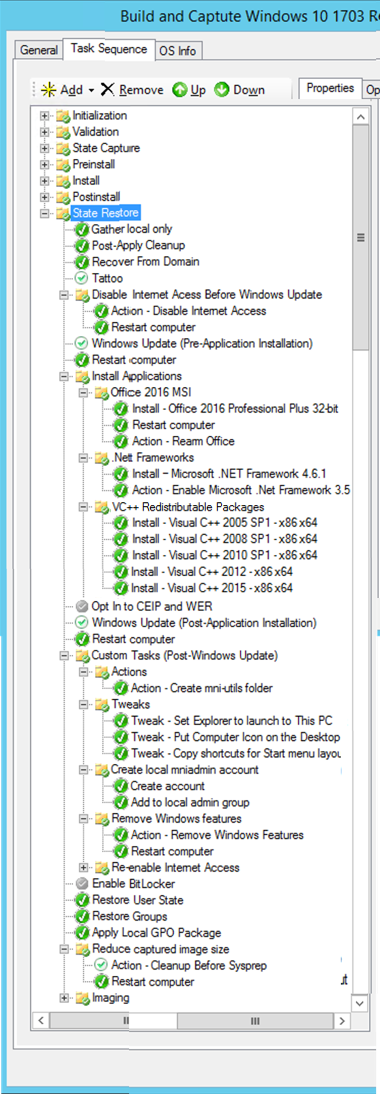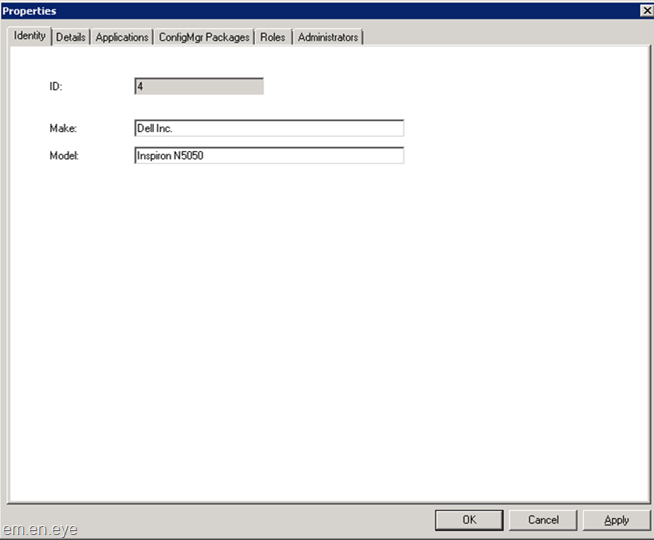I started a new job six months ago as a EUC/SCCM Engineer where, after having delivered a couple of high profile objectives, one of the goals I have set myself is to combine 3 task sequences into one and to simplify the resulting Task Sequence.
I initially considered dumping the MDT integrated Task Sequence and going native SCCM, favouring the clean and simplified layout of the native TS in comparison to the MDT integrated one. But after a little deliberation I dismissed the idea since I was hoping to spin up a MDT database to make the Task Sequence and the build process truly dynamic, plus I really liked having all those extra task sequence variables that comes with MDT.
But then Gary Blok (from garytown.com) tweeted that he had moved away from MDT integrated to native SCCM and I was swayed again by his clean all-native task sequence. He even provided instructions on how to create a “MDT Lite” package which gave you access to all the additional task sequence variables without all the bloat.
So, taking inspiration from Gary I decided to go native SCCM.
In my MDT integrated task sequence I have all my PowerShell scripts in a folder called “ZTICustomScripts” which sits in the Scripts folder in the MDT Toolkit Files package. That way I can call the script by referencing the “%SCRIPTROOT%” variable, like below:
I knew that if I wanted to move to native SCCM task sequence then I will need to be able to still reference the “%SCRIPTROOT%” variable, which would mean I can copy and paste these steps from one TS to another.
I followed Gary’s blog post to create my MDT Lite package, except for copying the BGInfo files since I use the excellent OSD Background tool instead. Of course, I also added my ZTICustomScripts folder which contains all my PowerShell scripts:
I created a package called MDT Lite with the above contents. This is how I used it in my new all-native Task Sequence:
Created a group called “Download MDT Lite” right after the partitioning steps.
Added a “Download Package Content” task and called it “Download MDT Lite Package”. I selected the MDT Lite package I created and set the download location to “Task Sequence working directory”. I checked “Save path as a variable” and chose “MDTLite” as the variable name.
Note that to be able to reference the contents of this package we have to append “01” to the name of the variable, thus “MDTLite01”. (If we had a second package to download in the list then that package location would be referenced as “MDTLite02”.)
I can now reference the Scripts folder within this package as “%MDTLite01%\Scripts”, but that would mean updating each and every one of my Run Command Line steps with the new path which is something I did not want to do. So I set my own custom task sequence variable called “SCRIPTROOT” and set its value to “%MDTLite01%\Scripts”, shown below:
This meant that I can just copy and paste my Run Command Line steps (which run my PowerShell scripts) to the new native task sequence with very little to no changes. I can also create a nested Task Sequence with all the steps to run my scripts which I can use in the MDT integrated TS and the native TS which has not gone into production just yet (and thus avoid duplication of efforts).
Lastly I done the same for the %ToolRoot% variable as well.
The resulting task sequence is a lot leaner and much easier to take in.














